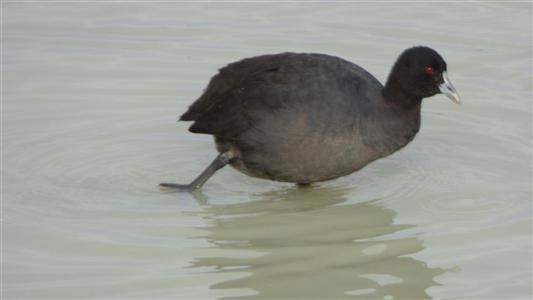
Another day. Another Coot.
Cloudy today.
Which changes the light.
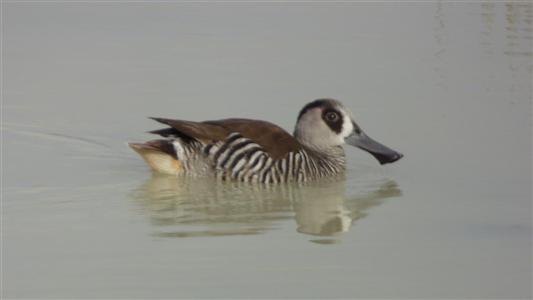
The coots and water hens wade around the edge of the lake. Picking food from the lake bottom or shore.
The coots venture a bit away from the shore and upend themselves.
Some of the ducks upend themselves to feed.
This duck dives and swims for food.
The herons and spoonbills have longer legs and necks, so can wade in deeper water and still reach the bottom.
Swans float and have long necks..
Then there are the birds that fly by and pick fish from near the surface. Some don't mind getting wet.
We are seeing all variations. In the same lake.
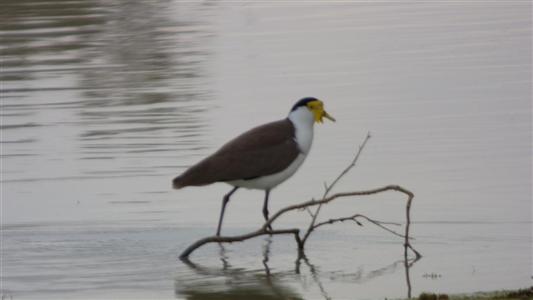
A pair of them.
I recognised their call before I saw them.
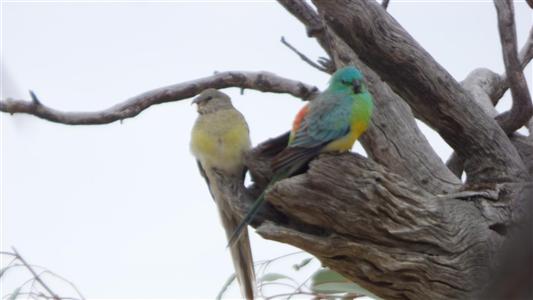
A pair of possibly red-rumped parrots.

It was in a tree a bit above me when I turned round.
I wonder what else I don't see. All those "unknown unknowns"?
We are used to visiting places which have lists of "over 200 bird species sighted".
We aren't used to seeing this many.
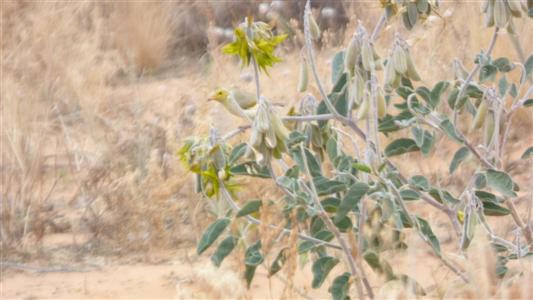
But wait.
There's more.
A bonus bird.
Looked like it was after nectar from the flowers.
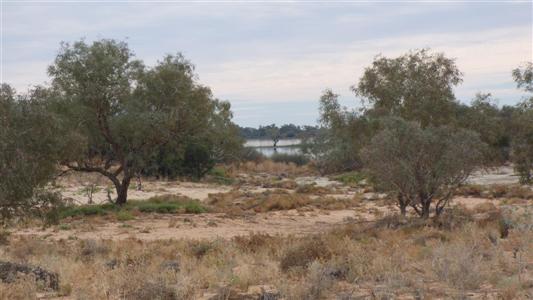
The trees are a narrow fringe on the dunes around the lake with a few odd ones further out.
Coolibahs giving way to accacias.
The coolibahs are probably very old.

The altitude indication from our gps is not really sensitive enough to show the relatively small differences in height (or depth) of lake beds that are the difference between water and no water.
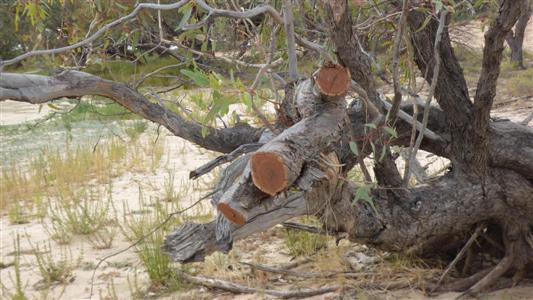
A bit concerned about campfires in the park.
The sawdust from someone's chainsaw was still on the ground.
The covered campfire was next to our truck.
Not our fire. Not our chainsaw.

Or at least one very like it.
This time in a coolibah tree next to the truck.
Reminds us of a silver eye.
Without the silver eye.
We see a few leaves move, then, if we look really hard, we may see the bird.
According to a photo in the Park HQ in Innaminka its a white plumed honey eater.
We're struggling a bit as we can't find the plume and its a tad smaller than honey eaters we are familiar with.
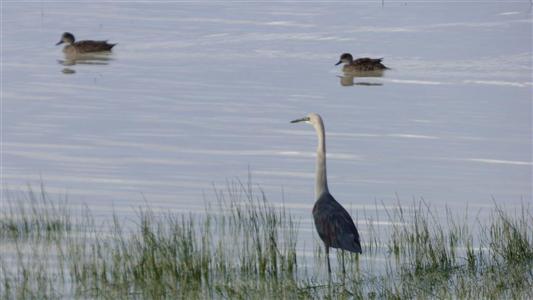
As the water level in the main branch falls the lakes empty back into the creek.
The water is thus fresh. Unlike Lake Eyre (which Cooper Creek finally empties into) which dries through evaporation and is thus a salt lake.
The lakes were formed when the serpent lay down for a rest and left depressions..
Apparently looks a bit like a green paddock for a while when drying apparently.
Reminds us of Tonle Sap in Cambodia which fills and empties from the Mekong River.
Except that the Mekong has an annual, seasonal, cycle. Whereas Cooper Creek floods very intermittently. Ephemorally?
The heron was at lake's edge on the other side of the spit dune.

Is it a white faced grey heron. Or our imagination.
Herons wade. But they have longer legs than coots and ducks so can wade in deeper water. They also eat different food.
Water depth is normally an indication of what birds may be around. Most of the birds we see seem to be resident rather than migratory. Though I bet they find another home when the lake is dry. An astonishing (to us) variety so far.
Photo taken from the truck (as are most) as we prepared for sunset.
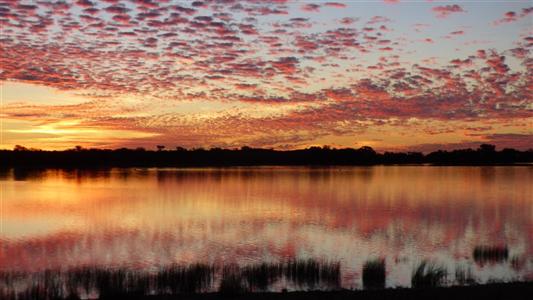
The light is provided gratis by the sun. The sound is the infinite silence of the desert.
We can ponder that as well as the bird photos here we've also seen wagtail (they appear all over Aus), honey eaters, noisy mynahs, water hens, we think seagulls, cormorants, black shouldered kites, crows (of course), magpie larks, and some we really only glimpse.
So far, no wrens. Which must make it one of the few places in Aus that we haven't seen some..
Such a display of nature we read of in books, or see on tv, but rarely experience.

Not very well it seems. I've noticed in the past that on occasion our house has sunk.
Altitude read from two gps every 30 seconds.
Too much variation to distinguish between adjacent lakes.
GPS 1 is a 10 year old dongle I plug into the netbook for Oziexplorer.
GPS 2 is the one used for normal navigation and previously provided the height data for Warburton Track and French Line.
Seems it has some (unknown) algorithm for smoothing the data.
At least we can probably say we are higher than French Line which is higher than Warburton Crossing.
Now my interest is sparked a bit more I'll check Cooper Creek at Innamincka.
Of course I'll be in a bit of trouble if its uphill from here!

But generally content to watch all the activity.
Particularly a very active spoonbill which seemed to chase after underwater things.
The mud in our little patch of lake must be turned over several times each day.
This is a sacred ibis trying to hide behind a coolibah. We haven't seen any straw necked ibis.

Though we haven't yet figured out why.
Before leaving we decided to search for the exit/entry for north west branch of cooper creek into the lake.
A bit of bush bashing. We tripped over a few used turtle shells.
Cooper Creek Turtles?
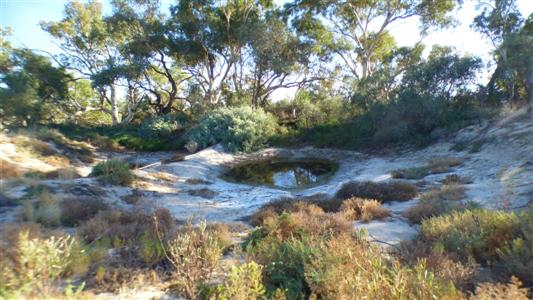
It slowly faded as we had the creek on one side and lake on the other.
This hole doesn't look natural. The trees are on the bank of the creek.
The lake water is a bit murky. This looks "filtered".
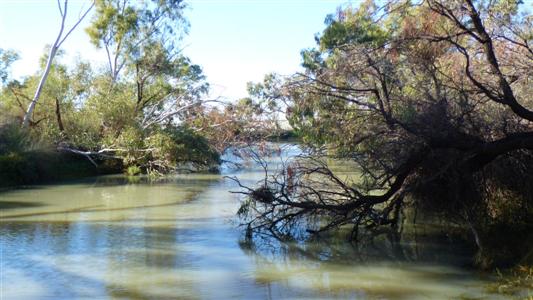
A bit too much vegetation to allow us to walk along the bank.

There's always more of course.
The pelicans are out of our reach.
Unlike the calm of the last few days there is a stiff breeze.
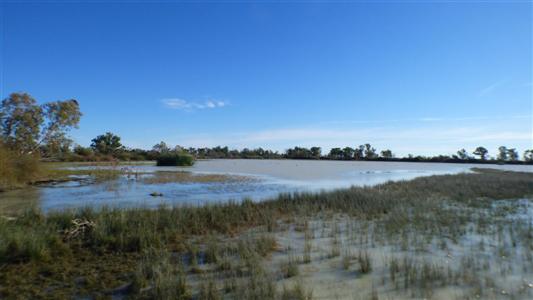

We were stood on the small spit at the bottom, looking north east.
Cooper Creek is a bit obvious, the real entrance to our north.
The pelicans were on the south side of the main creek as it enters/leaves the lake. About 300m from where we stood.
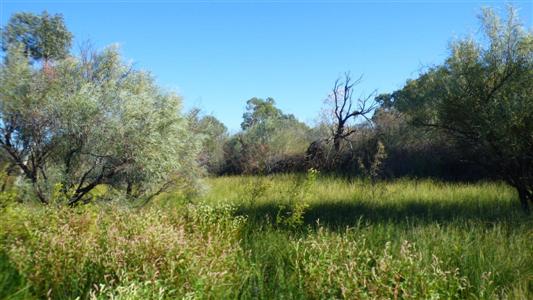
Away from the water the lignum is thick, and impenetrable.
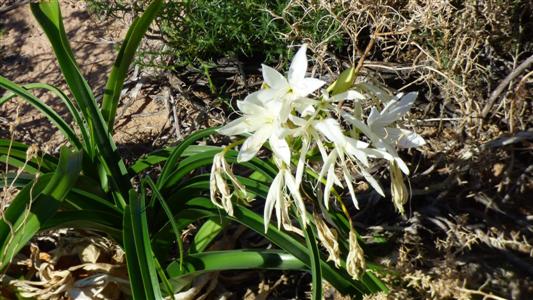
This is the first we've seen in flower.
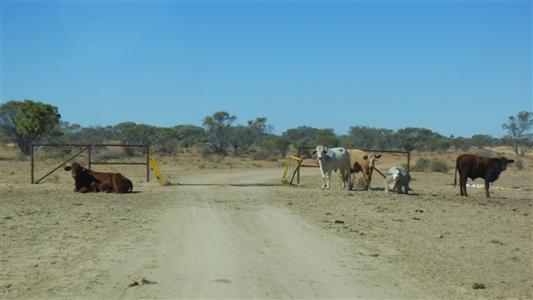
The track back to Innamincka is much the same as we left it.
All 100km of it.
We contemplate how lucky we've been.

A bit east of Innamincka.
On the far side of Cooper Creek, to the north, we seethe Merninie Range.
Aligned south west - north east. The high point is hidden from us, about 135m.
We aren't used to seeing anything but dunes.
About 20km east of us is the South Australia / Queensland border.
And Channel Country.
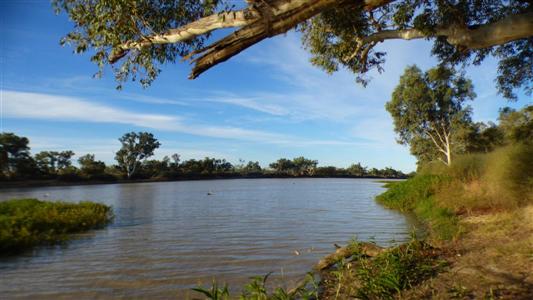
Spot heights on the 1:250,000 map suggest Coongie Lake is a couple of m lower than where Cooper Creek and its North West branch meet. We are up stream and a bit higher.
Happy now.
Cullyamurra Waterhole is Australia's biggest (longest) billabong.
Access to the water is a bit limited by lignum. But we got there.
There's lots of mussel shells, and some recent oysters.
We are feeling tired. And "only" 1180km from home as the crow flies.
We have sufficient fuel to reach Eromanga. Full tanks will get us home from there.